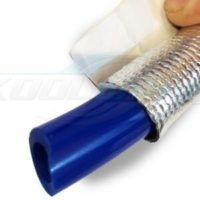The Case for Slow Design: Make Art, Not Products – by Jesse Weaver
By The Denver Egotist / /
Coming out of school as newly minted designers, we often aspire to the heights of master craftsmanship. We envision ourselves creating expertly designed, meticulously implemented products that inspire awe with their beauty, artistry, and execution.
Then the real world promptly smacks us in the face.
Craftsmen spend untold hours creating their masterpieces. They sweat the details and pour their souls into the work. Their final creations are as much art as they are products.
Somewhere in our industrialized rush, we’ve lost our sense of craftsmanship.
We, on the other hand, find ourselves saddled with impossible deadlines that require us to compromise on features and details. It’s all we can do just to get the project done. Our final products are minimum viable. They’re driven by the invisible hand of the market, which relentlessly demands speed so we can squeeze out a few more sales for the quarter. Getting a product out is considered better than getting it perfect.
The craftsman is not worried about speed. The craftsman is worried about the quality and value of the final product.
Somewhere in our industrialized rush, we’ve lost our sense of craftsmanship. To succeed in the future, we’ll need to find it again.
Do We Need Speed?
Speed is cancer to craftsmanship. But the idea that speed is a positive quality runs deep. Like, primordial deep. In the book Metaphors We Live By, authorsGeorge Lakoff and Mark Johnson explain that our positive association with speed dates back to the dawn of humanity, when early man observed that healthy humans walked at a quicker pace than those who were not healthy. The rest, in our primitive lizard brains, is history. Fast is better than slow.
We haven’t evolved much past that.
We assume first to market is best. Yet, according to researchers at Northwestern, late entrants to a market are more successful than first-movers 70 percent of the time.
When a startup does win, it’s often not because they were fast, but because they were focused.
We mythologize the fast, nimble startup that disrupts the lumbering, established market leader. But, like the plane crash that makes us question the safety of flying, these rare, widely covered stories do not represent the full picture. The average startup does not win the battle, regardless of how fast it moves. When Richard Branson weighed in on this, his advice for entrepreneurs was littered with words like long-term, carefully, and wisely. Those words don’t sound fast at all.
When a startup does win, it’s often not because they were fast, but because they were focused. Just as when a larger company is disrupted, it’s not necessarily because it was slow, but because it lacked focus as its business grew to multiple markets and products.
Focus, therefore, is more important than speed.
The Hare was faster than the Tortoise, but the Tortoise won because the Hare lost focus.
The Changing Complexion of the Market
The driving mantra of fast-moving tech companies is out is better than perfect. However, a seismic shift is happening in the way consumers think about products and what they’re willing to pay for. The shift means we may need to rethink that mantra.
Josh Allan Dykstra laid it out in his Fast Company article, “Why Millennials Don’t Want to Buy Stuff.”
To ‘own something’ in the traditional sense is becoming less important, because what’s scarce has changed. Ownership just isn’t hard anymore. We can now find and own practically anything we want, at any time, through the unending flea market of the Internet. Because of this, the balance between supply and demand has been altered, and the value has moved elsewhere.
I’d take this a step further. I don’t think this change is just about scarcity, I think it is also about quality. The world is flooded with worthless crap. Speed drives quantity over quality, and the durability and lifespan of our stuff has been steadily declining.
In the digital space, quality does not necessarily come from how long something lasts. Quality is a combination of utility and design. A great product needs to solve a real problem in a thoughtful, simple way.
So much of what we create does not solve a real problem. And even if it does, it likely wasn’t created all that thoughtfully. How could it be, when the main goal is to just get something out there? This quote from 2010 in Apple’s app review guidelines sums it up nicely:
“We have over 250,000 apps in the App Store. We don’t need any more Fart apps.”
As Dykstra put it:
Humanity is experiencing an evolution in consciousness. We’re starting to think differently about what it means to ‘own’ something. This is why a similar ambivalence towards ownership is emerging in all sorts of areas, from car-buying to music listening to entertainment consumption…the big push behind it all is that our thinking is changing.
Couple this ambivalence with growing concerns about environmental and social impact and you’ve got yourself a consumerism revolution in the making.
“The biggest insight we can glean from the death of ownership is about connection,” Dykstra writes. “This is the thing which is now scarce, because when we can easily acquire anything, the question becomes, ‘What do we do with this?’”
We no longer care about acquiring — we care about connecting. With each other, with ourselves, and with our environment.
Creating a product that drives a true connection with a person requires thoughtfulness and a relentless obsession. It requires craftsmanship.
What Do We Do With This?
Speed is not an advantage anymore. In the digital space, the technical playing field has been leveled by open source tools and frameworks. Everyone now has the ability to move quickly. Advances like 3D printing are likely to bring similar change in the manufacturing world as well. Being first is now more irrelevant than ever.
Magic takes time. Magic takes craftsmanship.
More importantly, the consumer mindset is shifting. People are becoming more and more selective about what to spend their money on. Apple understood this before almost anyone else, and they’ve led a design revolution that has changed the expectations of every consumer who chooses to buy a product. Thoughtfulness and great design matter.
It’s no longer enough for a product to simply exist. To succeed, future products need that thing, that je ne sais quoi, that magic. And magic takes time. Magic takes craftsmanship.
Craftsmanship is the new advantage.
Companies have to sweat the details. We can’t be afraid to push our timelines to get something right. As designers and developers, we’re doing ourselves, our companies, and our end users a disservice by cutting corners to hit deadlines and striving for minimum viable products.
We have to stop selling ourselves short.
Written by Jesse Weaver, Director of Entrepreneurial Design @cmci_studio | Cofounder @binderful


Comments